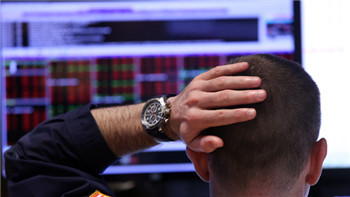
If you would like to understand Asia’s affinity with derivatives, especially among its army of “mom-and-pop traders”, search for “CBBC.” Top of the internet listings, even above CBeebies, the BBC children’s TV channel beloved of parents, comes the Hong Kong CBBC platforms of the likes of Credit Suisse and HSBC.
如果你想了解亚洲对衍生品的喜爱,特别是“散户”大军对它的喜爱,那就搜索“CBBC”吧。排在互联网搜索结果第一位的是瑞信(Credit Suisse)和汇丰(HSBC)等银行的香港CBBC(callable bull-bear contracts,牛熊证)平台,甚至超过深受家长喜爱的英国广播公司(BBC)儿童频道CBeebies。
Derivatives including Hong Kong’s callable bull-bear contracts highlight the gulf between east and west in terms of market behaviour and thinking. The best example of this is leveraged exchange traded funds, which are seeking space alongside the city’s booming CBBC market.
包括香港牛熊证在内的衍生品突显出东西方在市场行为与思维方式上的差异。最好的例子是杠杆交易所交易基金(杠杆ETF),它们正与香港蓬勃发展的牛熊证市场一起谋求发展空间。
The Hong Kong Exchange recently introduced its first leveraged ETF, ahead of Singapore and following in the footsteps of Seoul, Tokyo and Taipei, where business is booming. In Tokyo, the Nikkei 225 Leveraged Index ETF, the largest such fund in the world, grew so big at one point last year that it suspended investment for fear of swamping the futures market via which it produces its returns.
香港交易所(HKEx)最近推出了首批杠杆ETF,先于新加坡,而紧跟该业务正蓬勃发展的首尔、东京和台北的步伐。在东京,日经225指数杠杆ETF(Nikkei 225 Leveraged Index ETF)是全球规模最大的杠杆ETF,去年其规模一度膨胀到暂停认购,因为有关方面担心其对股指期货的需求会淹没作为其回报来源的期货市场。
By contrast in the US, the Securities and Exchange Commission is planning to cut the leverage that funds can offer in an effort to protect retail investors. In June, Oppenheimer & Co paid $2.9m in fines and restitution for selling such complex ETFs to vulnerable savers.
相比之下在美国,美国证交会(SEC)计划降低基金提供的杠杆比例,以保护散户投资者。今年6月,奥本海默(Oppenheimer)因向脆弱的储户销售复杂的ETF产品,被责令缴纳290万美元的罚款和赔偿。
While the US first allowed leveraged ETFs in 2006 — three years before Seoul — they have not taken off in the same way as in Asia. They account for just 1 per cent of the US ETF industry’s assets under management and 9 per cent of its trading. Meanwhile In Seoul, leveraged funds represent 14 per cent of the total market and half the turnover, and in Tokyo, 7 per cent and 82 per cent respectively. In Taipei, which only allowed them two years ago, they represent 31 per cent of ETF assets and 76 per cent of trading activity.
尽管美国在2006年就批准了首只杠杆ETF(比首尔早3年),但其发展并不像亚洲这样迅速。它们仅占美国ETF行业管理资产规模的1%,占交易量的9%。而在首尔,杠杆ETF占整个ETF市场的14%,占成交量的一半,在东京这两个数字分别为7%和82%。在台北(两年前才放行),杠杆ETF占ETF资产的31%,占交易量的76%。
Leveraged ETFs aim to am-plify returns of the underlying assets through derivatives. Hong Kong’s are capped at two times leverage, meaning that if the underlying index gains, say, 5 per cent, an investor gets 10 per cent. The key is that the funds are essentially reset every day. This means that someone who holds the ETF for five days over which the index climbs a cumulative 5 per cent, will not automatically receive 10 per cent.
杠杆ETF通过衍生品放大标的资产的回报。香港最高允许两倍杠杆,这意味着如果标的指数上涨5%,那么投资者将获得10%的收益。关键是这些基金基本是每天重新调整。这意味着如果投资者持有某只杠杆ETF 五天,期间标的指数累计上涨5%,投资者并不会自动获得10%的收益。
The main reason for Asia’s interest is many retail investors tend to think short-term. Almost a quarter of all South Korean stocks are still held directly by individuals, for example, while in Hong Kong, retail accounts for a fifth of all trading, compared with 2 per cent in New York.
亚洲对杠杆ETF感兴趣的主要原因是很多散户投资者往往是短线投资。例如,近四分之一的韩国股票仍直接由个人持有,在香港,散户交易占全部交易量的五分之一,纽约仅为2%。
They are also accustomed to leverage and the concept of derivatives. In addition to pioneering leveraged ETFs in Asia, Seoul is also the world’s biggest market for single-name stock options. That occasionally gives its retail punters the power to move other markets — most recently in January, when bets via so-called autocallables weighed on European shares as well as Hong Kong ones.
他们对杠杆和有关衍生品的概念也习以为常。除了是亚洲杠杆ETF的先锋,首尔还是全球最大的单一股票期权市场。这偶尔会赋予首尔散户撬动其他市场的能力——最近一次发生在今年1月,当时通过所谓“自动赎回”(autocallable)机制开展的押注行为,给欧洲和香港股市带来了极大压力。
Brian Roberts, head of ETFs in the Hong Kong Exchange’s market development division, describes Asia’s interest in derivatives and leverage as a tactical, not strategic, approach. “When I look at US-based investors you see them being much more strategic in their asset allocation method and their investment decisions,” he said. “In Asia we see investors being much more tactical and far less having a strategic asset allocation mix.”
港交所市场开发部的ETF主管布莱恩•罗伯茨(Brian Roberts)称,亚洲对衍生品和杠杆的兴趣是一种战术方法而不是战略方法。他说:“观察美国投资者时,你会看到他们在资产配置方法和投资决策上的战略性强得多。在亚洲,我们发现投资者更偏重战术,战略性资产配置结构少见得多。”
Mr Roberts was speaking at a workshop held by the exchange to explain leveraged ETFs, and indeed, investor “education” has been a key part of the marketing push.
罗伯茨此番言论是在港交所主持的一个研讨会上解释杠杆ETF。事实上,投资者“教育”已成为营销的关键环节。
“In the early stage of [these] products in the US, there wasn’t that much focus on investor education . . . we have learnt from that,” says Sunghoon Koo, chief executive of Samsung Asset Management, which launched the first ones in Hong Kong, based on the Nikkei and Kospi indices.
三星资产运用(Samsung Asset Management)首席执行官Sunghoon Koo表示:“在美国(这类)产品推出的早期阶段,对投资者教育的关注没有那么多……我们已从中学到教训。”三星资产运用是在香港首发杠杆ETF的机构,其杠杆ETF挂钩日本东证指数(Topix)和韩国综合指数(Kospi)。
Turnover in Hong Kong so far is small with many investors waiting for regulators to allow products based on Hong Kong indices — China, in other words. Still, as a Goo-gle search shows, the overall retail derivatives business is booming. As of Wednesday, “CBBC warrants” brought up the platforms of Société Générale, Macquarie, BNP Paribas, JPMorgan and UBS — not names known for bothering with small-time markets. Whether mom and pop embrace leveraged ETFs in Hong Kong or not, it appears the Asian and US markets are set to go in different directions.
由于许多投资者在等待监管机构批准基于香港指数(也即押注中国市场)的产品,到目前为止香港的成交量还很小。不过,正如谷歌(Google)搜索所显示的,零售衍生品业务总体正在迅猛发展。截至上周三,“牛熊证”市场出现了法国兴业银行(Société Générale)、麦格理银行(Macquarie)、巴黎银行(BNP Paribas)、摩根大通(JPMorgan)和瑞银(UBS)等平台——这些名字可不是以肯费力参与小规模市场而闻名。不论香港散户是否接受杠杆ETF,亚洲和美国市场似乎注定走上不同的方向。











